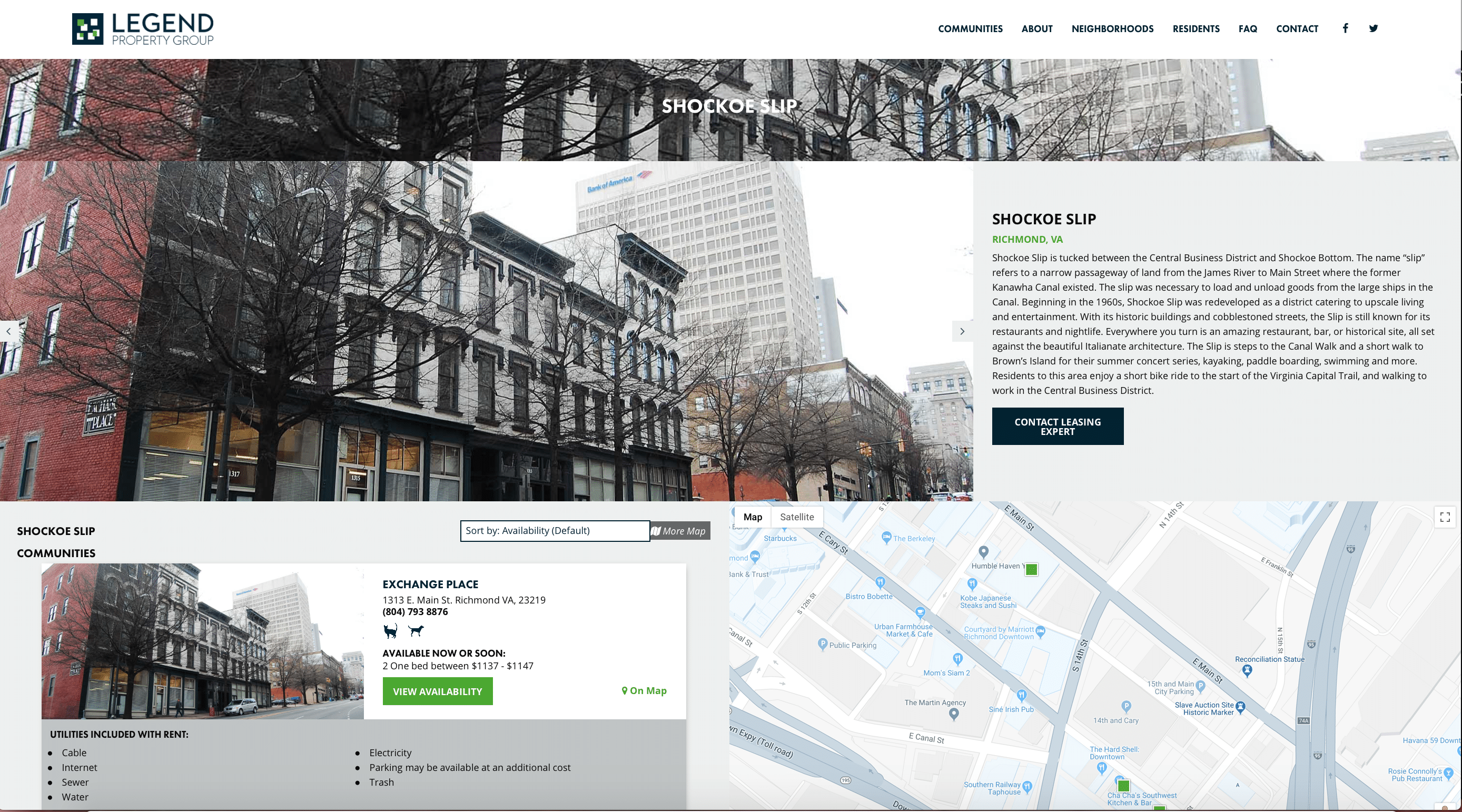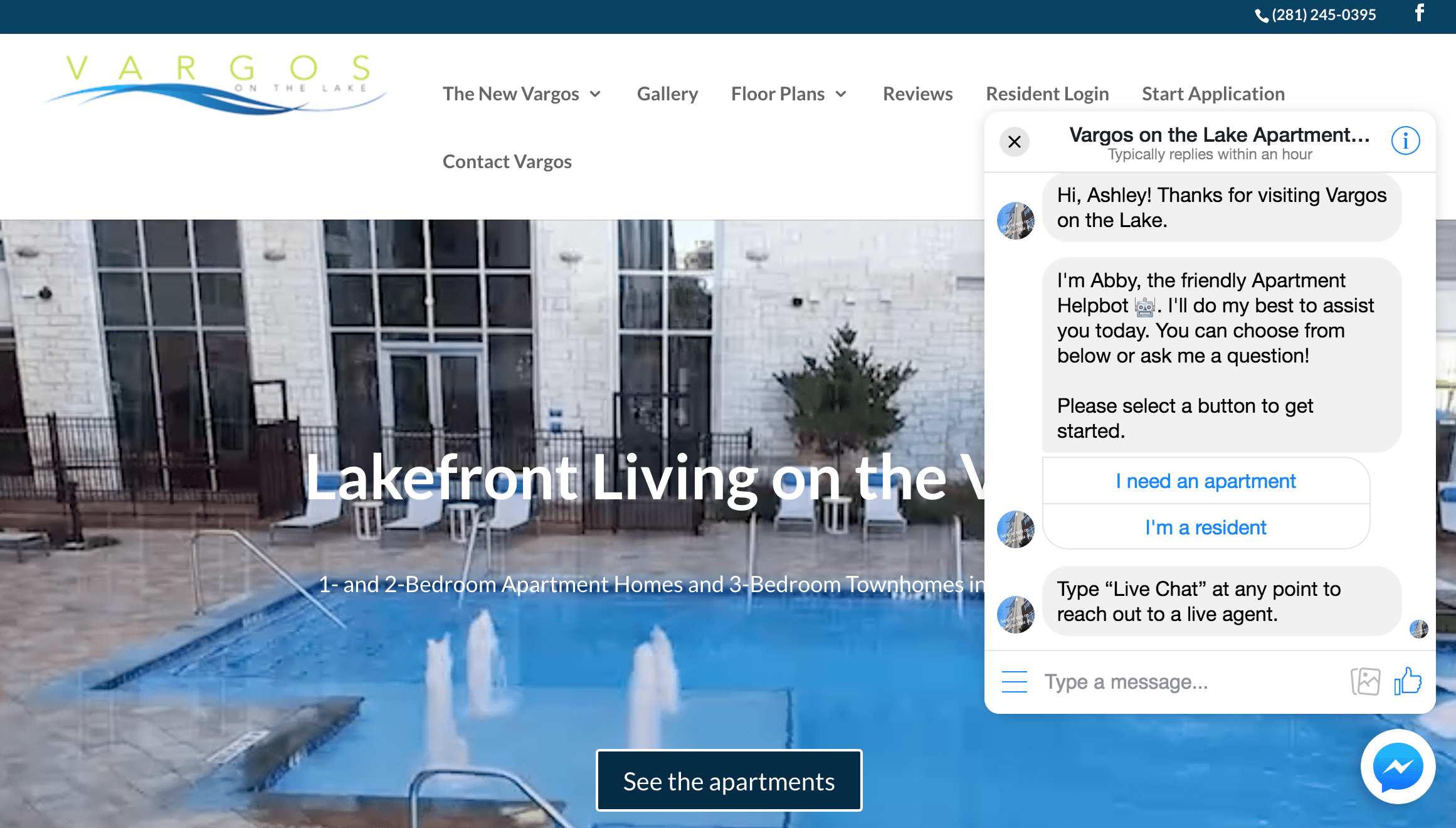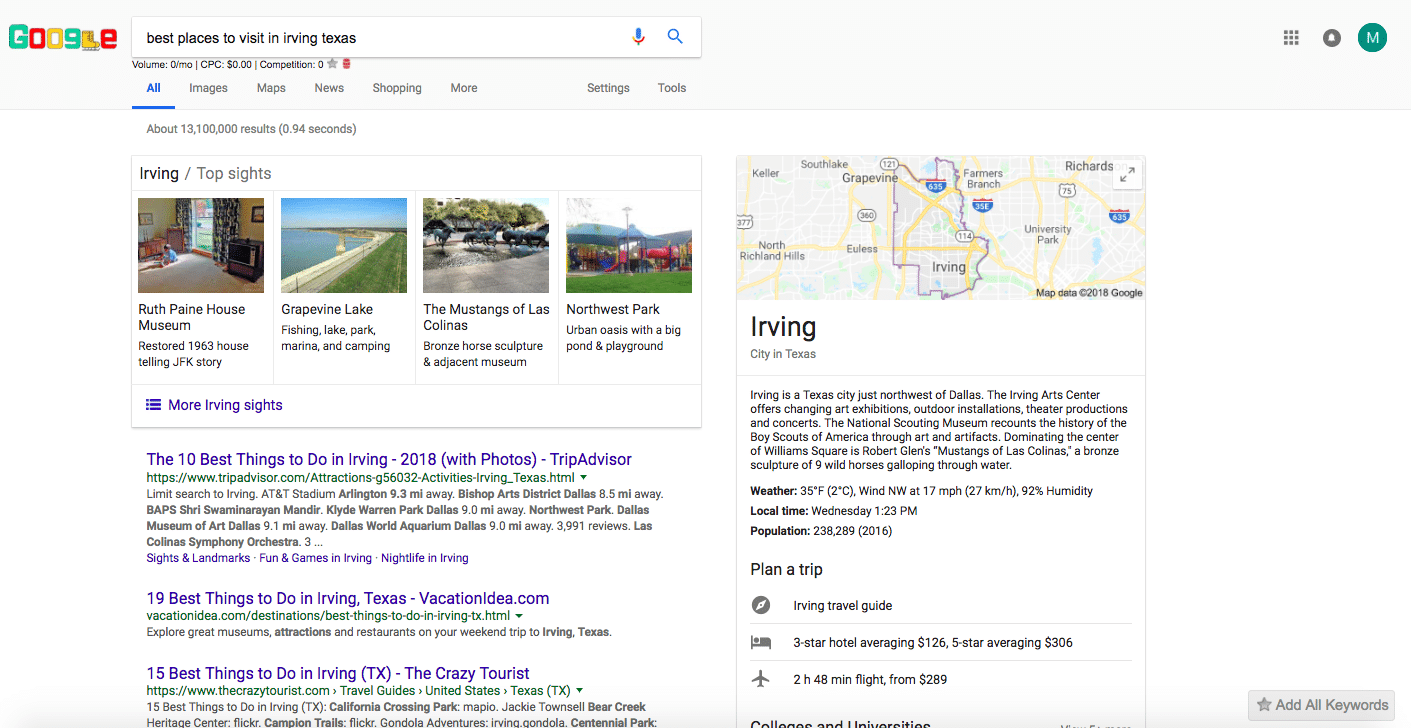What Apartment Shoppers Want: 6 Expectations Your Property Website Should Meet
Are you in the process of developing or redesigning a new apartment website? Are you researching new tools to apply to an existing multifamily website? Regardless of where you are in the process, it’s critical to consider what apartment shoppers actually need from your digital leasing office.
Today, renters have lofty expectations when it comes to shopping for an apartment online. Gone are the days when property websites are simply being compared to other property websites. Instead, they are being compared to non-multifamily brands like Nordstrom and Amazon. These brands have mastered the online shopping experience, and they’ve done so by paying close attention to the behaviors their customers exhibit when searching, researching, deciding upon, engaging with, and ultimately initiating a transaction online. There is an art to crafting successful online customer interactions, and they’re the master painters.
When apartment shopping, the decision-making process is certainly more drawn out than it is when making lower cost, less risky online purchases. Prospective residents will likely visit more than just the apartment website when researching a property online. In fact, Google reports that, on average, a shopper uses 19.2 sources of information to make a real estate buying decision. Prospects will read online reviews, browse social media pages, and comb through the property’s Google My Business listing for key information. They’ll land on ILSs and paid advertisements. They may even land on the management company’s corporate website — especially if you’re applying our portfolio leasing approach to search marketing.
However, a longer purchasing process means there is even more opportunity for your brand to meet and exceed a prospective renter’s expectations.
You can start by turning your property website into your online leasing office, making sure it’s always on and always responding to your customer’s needs. Let’s review six essential elements renters expect when they discover, research, engage, and transact through your apartment website.
6 Expectations Your Property Website Should Meet
1 | They want a frictionless shopping experience.
Make the process of doing business with your property easier. Prospects want a shopping experience that is free of friction, or hurdles encountered during the buying process. When prospects experience a hurdle on your website, they’re more likely to jump into the arms of your competitors. We don’t want to drive traffic (and leads) to competing property websites!
Social Media Today reports 54% of customers have stopped purchasing from a website because it was too difficult to find and choose the right product, while 71% have simply switched to a different website because they made the buying process easier.
The more complicated your property’s shopping experience is, the more likely prospects are to switch their search to a competitor that makes the process easier.
So, how can we create a frictionless shopping experience? At 30 Lines, we encourage apartment marketers to focus their attention on the behaviors customers exhibit, specifically when shopping online. Let’s put ourselves in the buyer’s shoes, and then walk around for a bit.
Pretend you’re a prospect learning more about your apartment community.
- If you were to ask a question, how long does it take the leasing team to respond? Remember, today customers are accustomed to receiving immediate feedback and solutions – thanks to brands like Amazon and Nordstrom.
- Is it easy for you, as a prospect, to sign up for additional information, and do the follow-up emails and messaging deliver a clear call to action? A call to action encourages a prospect to take a very specific action, such as “schedule a tour” or “apply now.”
- When you perform a Google search is the contact information that shows up on the property’s Google My Business listing correct and consistent with what’s communicated on the apartment website? Keeping this information correct and consistent not only has SEO value but also conveys trust between your team and the customer.
- Is the apartment website set up to clearly communicate and provide the information you’re seeking, such as floor plan options, updated pricing, amenities available, and directions?
- How many steps does it take to set an appointment time with your staff, or schedule a tour? Automating your tour calendar to let prospects see available times and schedule their tour can make a big difference. It creates less work for both the prospect and your leasing team.
These may seem like simple questions, but how your property website responds can leave a lasting positive impact on both the customer and your leasing numbers.
2 | They want to establish trust.
Potential residents want to know everything they can about your property before move-in, and they expect your website (and all other digital channels) to accurately provide this insight. Information on your website should not only be transparent but also as up-to-date as possible.
One of the easiest ways to set your property website apart in today’s competitive marketplace is to include as much relevant insight as possible. Forcing prospects to call your leasing office to ask a simple policy question, such as “How much is your pet deposit?” not only takes time from your leasing team, but it creates friction and may cause unnecessary speculation. We don’t want to give the prospect any reason to dive into a hole of speculation and ask themselves: “Why isn’t this information listed on the website? Is the deposit expensive? Are there hidden fees attached?”
Remember – when they trust you, they buy from you. Start by asking your leasing team the top five or 10 questions prospective renters ask when they call or email. You’ll likely find similar patterns in their responses, which can turn into valuable content for your property website.
Of course, online ratings and reviews will also help you gain (or lose) trust with your customers. Let’s focus on asking satisfied residents to leave reviews, then make sure those glowing testimonials are showcased on high-traffic areas of the website. The floor plans page and homepage tend to be the most visited areas of a multifamily website.
3 | They want thoughtful, convenient support.
Proactive recommendations from your team can go a long way when a prospect is in the decision-making phase of their apartment search. A report conducted by retail technology provider Salesfloor examined customer desires when it comes to in-store shopping. According to the report, which was published in Adweek, 58% of customers said that online shopping lacks the level of service provided by in-store associates, and 84% said they seek advice or recommendations from sales associates.
This support can take many different forms digitally – from website copy to a property chatbot trained to respond to questions frequently posed by apartment hunters. Neither of these options negatively impact your team’s bandwidth, which is key. Your property’s website should be just as impactful as an on-site tour and be able to pass more qualified leads to your leasing team.
We never want to overpromise and underachieve in our support — that will immediately turn prospects off. Instead, your property website should facilitate your team’s thoughtful approach to customer service, and work hand-in-hand with onsite team members.
Use your property website to show off your leasing team’s knowledge and expertise. This not only builds trust with the customer but also helps better tell your brand or community’s story. Remember, your property is just one of many communities a prospect is considering during their search. The more valuable information you can provide, the more likely the customer is to take a sales action with you.
Why not build a landing page on the website dedicated to the neighborhood your property is located in? This will not only play a big role in progressing your property’s search engine optimization (SEO) strategy, but it can also help showcase your leasing team’s insider insight.
4 | They want instant responses.
Prospects don’t want to wait until your leasing office opens to receive a response from your team. In fact, imagine how many properties a prospect will research and contact while they’re waiting for a response from you. If just one of those competing properties responds more quickly, they win the lead — not you.
Customers expect both convenience and immediacy when shopping online, regardless of the industry they’re transacting with. They want to be able to find the information they need quickly, so they can continue on with their day. There are a number of self-service options that can be implemented on a general website, including FAQ pages, product filters, live chat tools, email help desk information, conversion tools, and chatbots.
In multifamily, we have to consider what tools work best with the product we’re selling, as well as the operations of our on-site teams. Most conversations with multifamily-specific chatbots are initiated by a prospect or resident after 9 p.m., with many of those late-night chats taking place between midnight and 1 a.m. Website conversion rates in multifamily tend to hover between 1-2%, which means 1-2% of website visitors complete a guest card and turn into a lead the leasing office can contact. Chatbots are converting apartment shoppers at rates between 14-38%.
The success we’re seeing with digital tools, like chatbots, is a direct result of giving prospects exactly what they want (and expect) when shopping for an apartment online.
5 | They want visual, yet searchable content.
Even before stepping foot into their future apartment, prospects want to open the door to their future living experience — online. Social media channels, especially Instagram, provide a great canvas for properties to paint this portrait online. However, your property website should not be left out of this artistic conversation.
Whether offering 360-degree tours of available units or providing high-quality photos of featured amenities, visual content is an integral component to consider when developing your property’s website. Keep in mind, the process of obtaining these digital assets doesn’t have to be complex or expensive. Today, your phone’s video and photo quality are probably just as good as most professional equipment.
Along with offering prospects a look around their home, visual content on your website is also a key component to optimizing the site for search engines. Google displays both images and videos among its 12+ SERP (Search Engine Results Page) features. In essence, SERP features represent any outcome on a search engine results page that isn’t a traditional organic listing. Our 30 Lines team covered this topic more in-depth here.
Google’s goal is to provide the best answer to a user’s search inquiry. Our goal is to be the best answer to a user’s search inquiry. Often times that answer takes the form of visual content from your property website – not just written copy.
6 | They want your marketing tools to communicate with each other.
How many times have you abandoned a shopping cart when browsing products online? According to Shopify, 67.45% of online shopping carts are abandoned before the customer completes a sale. Although it may not be possible to persuade all cart-abandoners to complete a transaction, the best e-commerce brands are certainly recognizing the profitable potential of reeling in shoppers who are on the fence.
How are brands making sure they’re not leaving money on the table (or, more specifically, in the cart)? They’re sending abandon cart email campaigns to remind cart-abandoners of the items they left behind. Many customers have the intention of buying. After all, they’re adding items to their cart. However, life is busy and distractions can certainly take over, and retailers know shoppers often need a reminder to come back and complete the purchase. These campaigns also typically include an offer or discount to further persuade the customer to take an action.
The abandon cart email campaign strategy is just one example of the level of personalization available when automated marketing tools communicate with each other.
Consider how we can apply these same strategies to multifamily marketing today:
- If you have a Facebook pixel code properly placed on your property website, you can enhance your Facebook advertising strategy to initiate remarketing ads and even develop lookalike audiences. Your ads can now target “warm” leads who have visited your website but maybe didn’t take a leasing action.
- If you can identify a prospect as a student or parent through digital tools implemented on your student housing website, such as a pop-up or chatbot, you can tailor follow-up messaging to each of those specific audiences, making your messages and calls to action much more relevant.
- If floor plan and pricing feeds from your property management software automatically pass to your property website, prospects can receive the most up-to-date information.
Keep in mind, these are just a few examples of what’s possible when your marketing tools are communicating with each other. Our 30 Lines team truly loves coming up with ways to connect the digital dots, and we also love hearing your ideas. Let’s chat more about the topic.
But, what do YOU want?
As apartment marketers, we want to be able to accurately track and report at every stage of a prospective renter’s online search. That’s how we begin to determine and thoughtfully communicate what digital marketing efforts are working, as well as where gaps in marketing strategy still reside. So, let’s consider what insight each tool can ultimately provide when building our property’s website. However, let’s also think about how we consolidate that reporting to paint a better, more accurate picture.
The more we can synthesize reporting, the less we have to worry about the degradation of data that ultimately takes place when it is passed from one system to another. The more your online assets can talk to your customer relationship management (CRM) software, and work together as tools to build your audience, the better.
Remember, most prospects review 19.2 marketing sources before making a decision. Instead of attributing a new lease to just one marketing source, let’s work toward accurately reviewing how all sources and marketing tools work together to convert that apartment shopper into a paying renter.
It’s important to consider not only what apartment shoppers want when conducting their search online, but also what we, as apartment marketers, want to track and report on the entire customer journey from start to finish.
Let's recap...
We’ve covered some important (and easy to implement!) website elements and updates that can help you better sell to today’s apartment shopper.
Need a refresher? Here are the six ways you can give apartment shoppers what they want from your property website:
- Remove friction
- Establish trust
- Provide thoughtful convenient support
- Facilitate instant response
- Offer visual, yet searchable content
- Make sure your marketing tools are working together
Want even more insight? We’d expect nothing less! Click here to start a conversation with Linus, the 30 Lines chatbot.
Your property website got them in the door, now what?
As any leasing consultant can attest, it typically takes more than one touch point before a prospect will sign on the dotted line. In fact, research shows it can go well above eight or nine touch points to convert a sale. So, how can you more efficiently manage this follow up?
We’ll show you! We’ve put together some free follow-up tips and tools.



